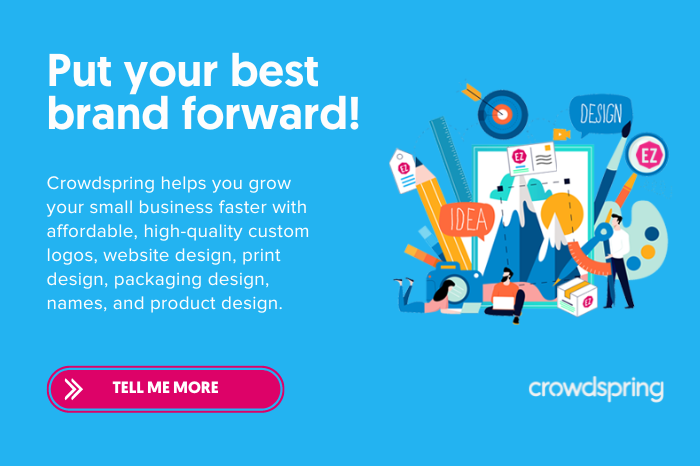10 Proven Tips to Dramatically Increase Customer Lifetime Value

To grow your business, you need to generate and convert a healthy portion of quality leads to paying customers. You also need to accurately measure this growth, which will require tracking specific metrics over a prolonged period.
Even if you’re just starting a business and writing a business plan, you’ll need project-specific essential metrics. Prospective investors and lenders will assess your projections when deciding whether your business is likely to succeed or fail.
Customer Lifetime Value, or CLV, is one of the most critical metrics for all growth-oriented businesses. Increasing CLV should be one of your most fundamental business goals.
What is Customer Lifetime Value?
Customer lifetime value is how much a customer is worth to a business over the lifetime of their relationship. The simplest way to calculate customer lifetime value is to multiply the average customer order by the average number of purchases per year, multiply this by the average retention time in years, and subtract the customer acquisition cost.

Understanding LTV is imperative; without this knowledge, you can not determine whether marketing value is worthwhile.
Let’s talk about the tactics you can employ to increase CLV and maintain it at a high level, ultimately helping you expand and develop.
Offer quality customer support
Excellent customer support should be an essential part of your brand strategy. 90% of customers consider the quality of a company’s customer support a vital factor in determining whether they will choose to do business with the company. 61% are also likely to switch brands if they have a poor customer support experience.
Consequently, you can increase CLV and boost customer acquisition by providing quality support. At the same time, you’ll be retaining a more significant portion of your leads and clients. You can do this directly or by outsourcing customer support to a third party, letting dedicated experts handle support while you focus on your core competencies.
Implementing a live chat option on-site is a significant initial step. You can rely on a customer support chatbot to handle more basic queries and direct traffic. Your human customer support reps will add that all-important human touch to the communication.
If possible, implement omnichannel support via phone, email, chat, text message, social media, etc. This will help you score a major point in the eyes of your leads, especially those who have yet to make that purchasing decision. Their loyalty may prove to be unwavering once they choose you as their service provider.
Increase your value by letting leads and clients switch channels without repeating their issues to different reps. You can do this by assigning a case to a specific rep, though this can be time-consuming if the rep is busy. A better way is to compile all customer communications into a single, accessible dashboard. Invest in good customer communication management software to centralize all messages into one inbox so everyone can easily access and respond.

We just emailed the info to you.
Diversify your product features
There are several ways to grow a business, including perfecting a single product that solves a problem extremely well or creating solutions for many interconnected pain points.
For example, Answer the Public only does one thing: it gives you keyword suggestions and suggests popular search terms. On the other hand, Ahrefs or SEMRush will help you with keyword research, but they can also do much more.
You may want to diversify your product features if you run a seasonal business that is only in demand at a certain time of year. Do this even if you follow the “solve one problem well” model. The same course of action is available if you offer hundreds of solutions.
A cautionary tale, though: perfect each feature before moving on to the next one. Remember Moz, the original SEO tool that everyone used and loved? They’ve managed to go from hero to nearly zero by overstretching themselves and trying to launch too many features simultaneously.
An excellent example of the kind of diversification we’re talking about is Yoast. It’s essentially an SEO optimization tool, but you can use it for videos and a lot of on-page tinkering that would otherwise require much coding knowledge. Plus, they also market themselves to different audiences along the same lines.
Remind customers what life was like without your product
Customers desensitized to your product’s value could easily forget what life was like before they started using it. They could easily trick themselves into thinking they could return to the days before you made their lives so much better.
Of course, if your product has a lot of value, customers will likely return, but wouldn’t it be better if you could prevent this churn entirely?
One of the most effective ways of doing this is to sketch a realistic, detailed image of what your product does for them, preferably in a “do it yourself” blog post.
Show your customers exactly how to do what your product does for them manually. Don’t hold back on the details. Give them everything they need to know to decide whether to recreate what your product does for them.
While this may sound counterintuitive, once they have this info, they will jump ship and do what you suggest.
Well, no. Not if you make it obvious how much effort they’re saving by using your product. Or how much money they’re saving. Or how much more professional they’re going to appear to their customers. Or whatever your main value proposition is.
Scott’s Cheap Flights is an excellent example: How to Find Cheap Flights in 2021: The Ultimate Guide.
The article is a guide on how to circumvent Scott’s flagship product. However, once the reader has trawled through the immense amount of information it provides, most people begin to appreciate all the effort the product saves them and continue paying for the service.
Offer a great onboarding experience
Another way to spread knowledge and ensure your customers make the most of their subscriptions is to onboard them well. If a customer has a poor initial experience with your product (especially if it’s a free trial), they probably won’t stay a paying customer.
Let’s take Ahrefs as an example here. Their tool can do so much that it’s pretty astounding. If you are new to the world of SEO, you can get lost quickly in the sheer amount of figures, tables, and options.
They have cleverly circumvented this issue with their customer onboarding process. When you sign up for their service, you get emails pointing you in all the right directions. You’ll get their most useful beginner-friendly blog posts that will get you started and their YouTube videos, where they demo some of the things the tool can do (and how to do it). Plus, they’ve also created several webinars that can teach beginners and pros alike to unlock the true potential of their software solution.
When onboarding new customers, ensure personalized guidance is available. Keep offering free demos, setup help, and support calls. Provide a clear guide on using your tool and easy access to important information. User onboarding software plays a crucial role here. It automates the process, helping you deliver a thorough and engaging experience right from the start, ensuring customers benefit immediately from your solution.
Offer annual pricing
Getting your customers to switch to an annual billing cycle instead of paying for your service monthly can be an incredible way to kill several proverbial flies in one fell swoop.
For starters, this allows customers to save some money. A 15-25% discount is usually warranted with an annual subscription – and people love to save money.
Switching people who typically use your product for 8-10 months to an annual subscription means you are extending their lifetime as users. But most importantly, it allows you to predict your revenues more accurately. Running a business where you know exactly how much money will come in for the next year is much simpler than having to contend with the uncertainty of monthly renewals.
Of course, you will never be able to convert all your customers to annual subscriptions. Some will only need your service for a shorter period, while others will appreciate the option of a flexible exit strategy.
You can implement a simple yet effective tweak by making the annual payment option the default on your pricing page.
Personalize your email communication
Personalization is a big deal in digital marketing. It’s probably the most significant marketing trend we’re seeing now.
Customers no longer want to be treated as equals. They want to get marketing messages explicitly tailored to their interests and needs.
If you don’t segment your leads and customers well, you may inadvertently miss out on conversion, upsell, and increase customer churn.
As email is the most common and frequent way we communicate with our audiences, segmenting your email lists is crucial. Start by considering the stage of the buyer’s journey a lead/client is in. Then, utilize every weapon in your arsenal to land them in the right box. Use the data they’ve provided, their social media accounts, how they utilize your product, etc. Surveys and questionnaires can also help you get to know your customers better.
Sending advanced user manuals to new users is usually the wrong approach. So, the better you are at email personalization, the higher your chances of inspiring clients to stay with you long-term.
Create an off-site community
Community-building is an increasingly popular tactic for most businesses, especially for SaaS (software as a service) businesses.
The primary purpose of this kind of community is to foster an environment where your customers (who also happen to share some of the same interests) can share tips and experiences. They’ll use this space to learn more about the best way to use your product, exchange ideas, and find inspiration about various related topics.
If it provides value, this kind of community can be worth the subscription to your product.
The WordPress community is an excellent example of the kind of community you should foster. However, you can also aim for smaller groups.
You can also choose to use Slack and create a channel where your customers can contact your team or swap stories.
Get active on social media
Even before the pandemic, we spent much time on social media. Now, we are practically glued to at least one channel for a significant portion of the day. And that’s why social media is the ideal way to get in touch with your audience and customer base.
What you choose to do on social media will depend on your resources. Maybe you’ll chat and share user-generated content. You might create short informational videos. Or perhaps you’ll routinely make brand-new bits of content (video or textual) that offer value to your followers. The choice is entirely yours.
Choose the channel your audience is most commonly found on, and start there. Bear in mind that it’s always better to be active on one social network than trying to be active on several simultaneously. Be sure you maintain a consistent brand identity on social channels that complements the brand identity on your business website.
Use a customer success platform
A customer success platform (CSP) is your one-stop tool for managing and tracking your customer success metrics. It will allow you to track CLV, average revenue per account, churn rates, etc.
Ideally, you want to create a customer roadmap and use the CSP to track different users on this journey. If your blueprint is correct, you will pinpoint the obstacles preventing a particular customer or prospect from continuing their journey. For example, you may have inadvertently placed them in the wrong email segment, which means they haven’t yet received the email prompts that would move them along.
This tool aims to give you a bird view of how your customers engage with your different touchpoints and products. When you notice a bump in the road, you eliminate it and help a customer become a repeat customer.
Get customer feedback
Finally, to truly measure your customers’ pulses, you should routinely survey them about their experiences with your business.
Email is the best network for this purpose, and countless tools for automating the process exist.
The two staple surveys you should focus on are the Customer Satisfaction and the Net Promoter Score surveys.
NPS surveys ask one question: how likely are you to recommend us to a friend or a coworker? The answers you get will tell you exactly how satisfied the user is with your brand.
Customer satisfaction surveys can be more complex and ask questions about different aspects of your business and tool. However, their purpose is the same, and they can provide valuable clues as to which segments of your product and service you need to fine-tune.
Increasing your customer lifetime value can be a lifelong mission. However, with the help of these ten tips, you should be able to start making headway soon. Don’t forget: what works for one business will not work for another. So, always consider your resources and goals before employing any tactic, no matter how lucrative it may sound.
Design Done Better
The easiest way to get affordable, high-quality custom logos, print design, web design and naming for your business.
Learn How to Grow Your Business With Beautiful Design
